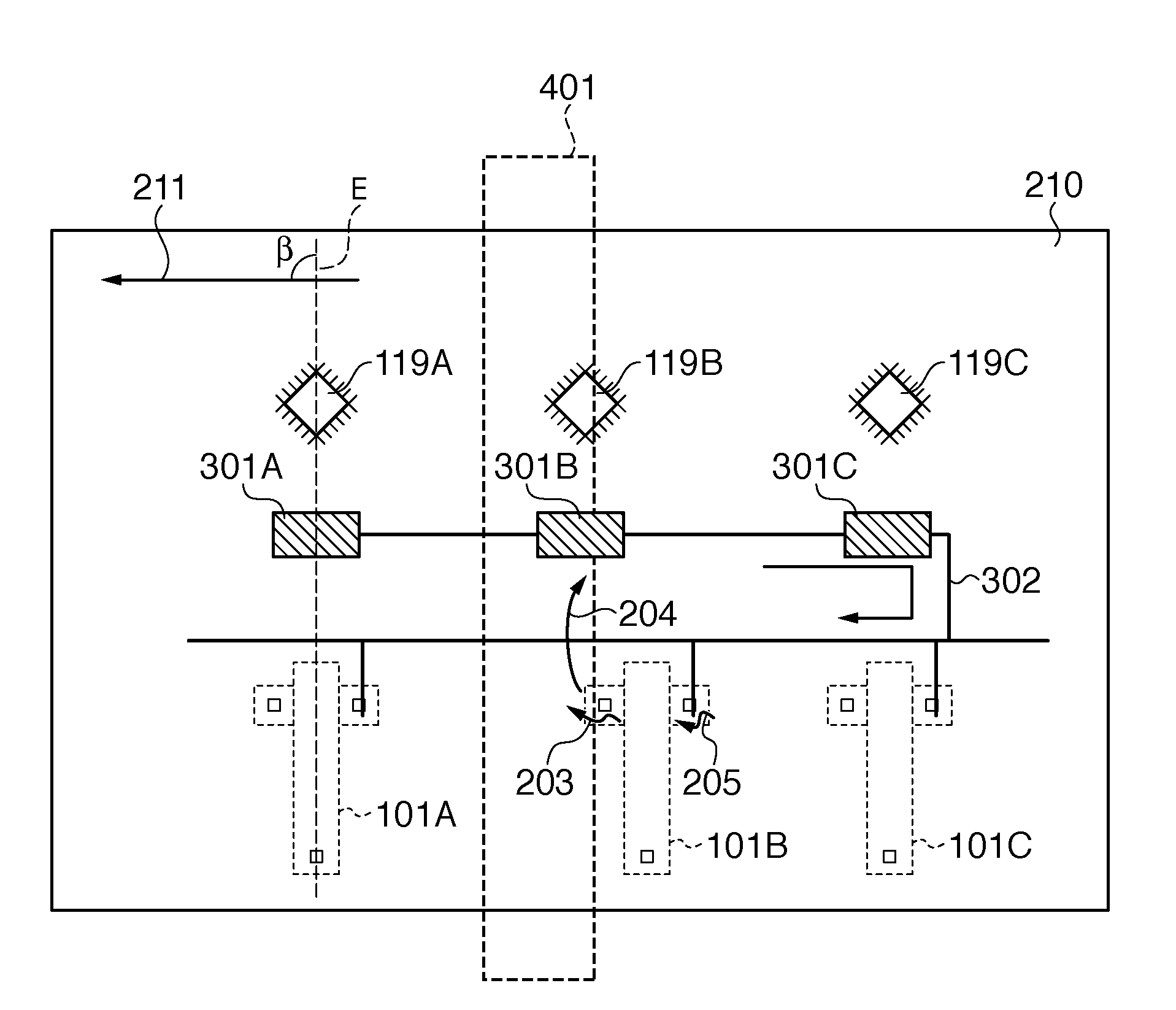Printed circuit board equipped with piezoelectric element
a piezoelectric element and printed circuit board technology, applied in the direction of fixed transformers, circuit electrical arrangements, printed circuit structure associations, etc., can solve the problems of difficult to reduce the size and weight of the wound-rotor electromagnetic transformer, and achieve the effect of low cost and simple structur
- Summary
- Abstract
- Description
- Claims
- Application Information
AI Technical Summary
Benefits of technology
Problems solved by technology
Method used
Image
Examples
first embodiment
[0047]The present invention is applicable to any electronic apparatus that includes a printed circuit board with a piezoelectric element and a semiconductor component, and the electronic apparatus does not need to be a high-voltage power supply apparatus. The present invention is also effective for a high-voltage power supply apparatus that outputs either a positive or negative voltage. Here, a high-voltage power supply apparatus that outputs a positive voltage will be described by way of example.
[0048]Piezoelectric transformers 101A, 101B, and 101C and semiconductor components 119A, 119B, and 119C illustrated in FIG. 1 are circuit components for forming different circuit blocks. This does not mean that the piezoelectric transformer 101A and the semiconductor component 119A, for example, constitute the same circuit block. In the present embodiment, the piezoelectric transformers 101A, 101B, and 101C and the semiconductor components 119A, 119B, and 119C are located parallel to a trav...
second embodiment
[0055]In the first embodiment, the semiconductor components are protected from discharge by providing the solder lands 301A, 301B, and 301C between the semiconductor components and the piezoelectric elements. In a second embodiment, a soldering enabling pattern is adopted instead of the solder lands 301A, 301B, and 301C.
[0056]A soldering enabling pattern 303 illustrated in FIG. 3 is a kind of land formed by exposing a wiring portion of a reference potential pattern 302. A single or multiple soldering enabling patterns 303 are located generally in parallel with a board travelling direction (the direction indicated by arrow 211) during solder mounting. That is, the soldering enabling pattern 303 that is part of a reference potential pattern and that extends in the travelling direction of a printed circuit board during the soldering process is adopted as a land that forms part of a discharge path. To simplify the description, FIG. 3 illustrates a single soldering enabling pattern 303. ...
third embodiment
[0058]A major difference of a third embodiment illustrated in FIG. 4 from the first and second embodiments is that anti-solder bridging patterns 304A, 304B, and 304C that are provided at end portions of semiconductor components are adopted as a discharge path in order to restrain the occurrence of solder bridging during the soldering process. Note that the anti-solder bridging patterns 304A, 304B, and 304C may also be referred to as dummy lands or dummy pads. The anti-solder bridging patterns 304A, 304B, and 304C are connected to ground lines or power supply lines through which a reference potential is given to semiconductor components. Note that the anti-solder bridging patterns 304A, 304B, and 304C are formed by stripping off a resist 603 and thereby exposing a copper foil 602 of wiring portions.
[0059]As described above, the anti-solder bridging patterns 304A, 304B, and 304C connected to a reference potential pattern are provided between the semiconductor components and the piezoe...
PUM
 Login to View More
Login to View More Abstract
Description
Claims
Application Information
 Login to View More
Login to View More - R&D
- Intellectual Property
- Life Sciences
- Materials
- Tech Scout
- Unparalleled Data Quality
- Higher Quality Content
- 60% Fewer Hallucinations
Browse by: Latest US Patents, China's latest patents, Technical Efficacy Thesaurus, Application Domain, Technology Topic, Popular Technical Reports.
© 2025 PatSnap. All rights reserved.Legal|Privacy policy|Modern Slavery Act Transparency Statement|Sitemap|About US| Contact US: help@patsnap.com



